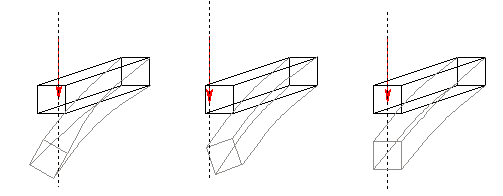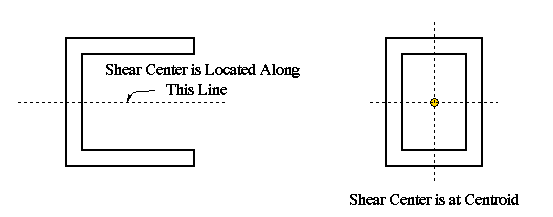
The shear center is in
fact the centroid of the internal shear force system. Depending on the beam's
cross-sectional shape along its length, the location of shear center may vary
from section to section. A line connecting all the shear centers is called
the elastic axis of the beam. When a beam is under the action of a
more general lateral load system, then to prevent the beam from twisting, the
load must be centered along the elastic axis of the beam.

The two following points facilitate the determination of the shear center location.

If the cross section contains no axis of symmetry or only one axis of symmetry, the determination of the exact location of shear center requires a more detailed analysis which we will discuss in following sections.
 To Section
III.3
To Section
III.3
 To Index Page of
Transverse Shear Loading of Open Sections
To Index Page of
Transverse Shear Loading of Open Sections